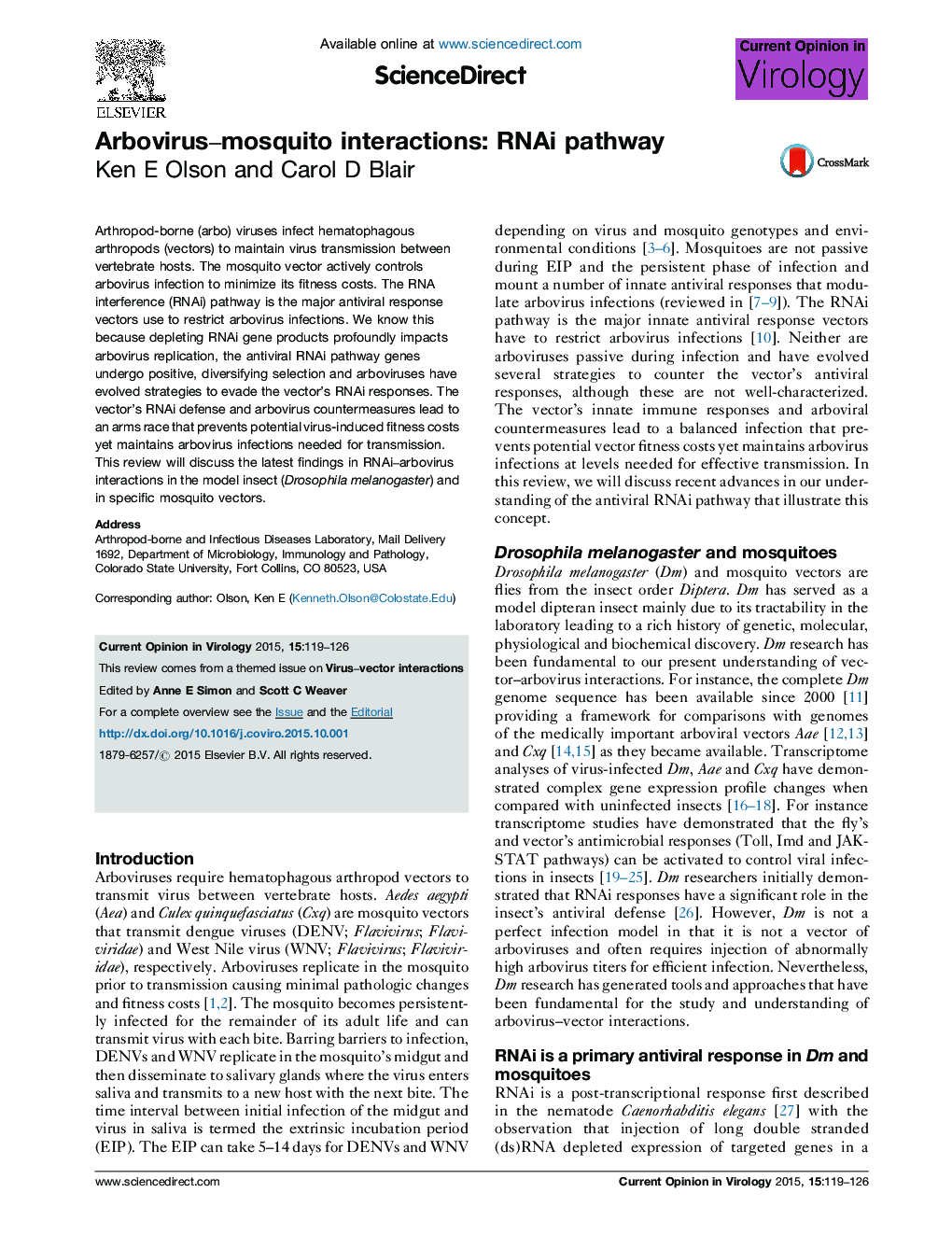| کد مقاله | کد نشریه | سال انتشار | مقاله انگلیسی | نسخه تمام متن |
|---|---|---|---|---|
| 2473205 | 1555911 | 2015 | 8 صفحه PDF | دانلود رایگان |

• The RNAi antiviral responses in Aedes aegypti include the siRNA and piRNA pathways.
• RNAi component genes in the siRNA pathway are rapidly evolving in Aedes aegypti.
• Potent suppressors of RNAi found in many pathogenic insect viruses are not found in arboviruses.
• The siRNA response may shape genetic diversity of arboviral populations in the vector.
• Endogenous reverse transcriptase in diptera likely generates DNA forms of RNA virus genomes.
• Transcripts from viral DNA forms may actively associate with RNAi pathway responses.
• Mosquito virus-specific piRNAs are implicated in antiviral defense of somatic cells.
• Future research activity should identify core components of the piRNA pathway required for an antiviral response.
Arthropod-borne (arbo) viruses infect hematophagous arthropods (vectors) to maintain virus transmission between vertebrate hosts. The mosquito vector actively controls arbovirus infection to minimize its fitness costs. The RNA interference (RNAi) pathway is the major antiviral response vectors use to restrict arbovirus infections. We know this because depleting RNAi gene products profoundly impacts arbovirus replication, the antiviral RNAi pathway genes undergo positive, diversifying selection and arboviruses have evolved strategies to evade the vector's RNAi responses. The vector's RNAi defense and arbovirus countermeasures lead to an arms race that prevents potential virus-induced fitness costs yet maintains arbovirus infections needed for transmission. This review will discuss the latest findings in RNAi–arbovirus interactions in the model insect (Drosophila melanogaster) and in specific mosquito vectors.
Journal: Current Opinion in Virology - Volume 15, December 2015, Pages 119–126